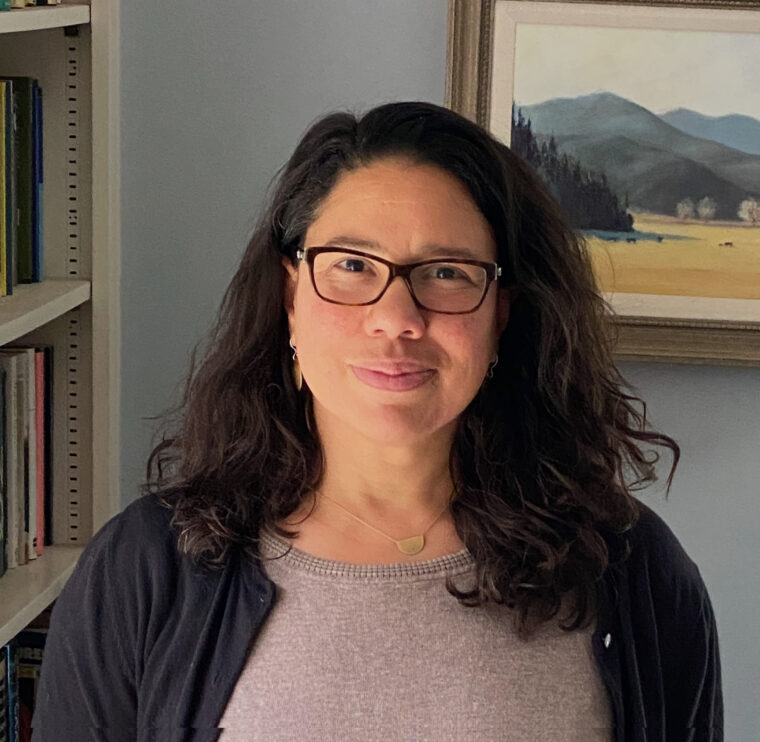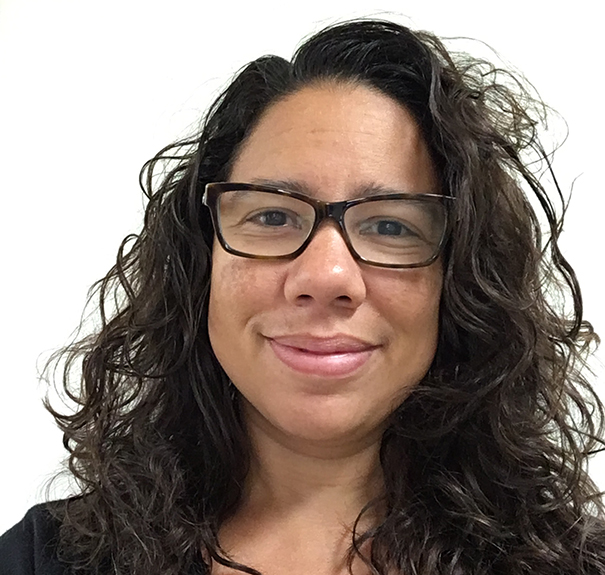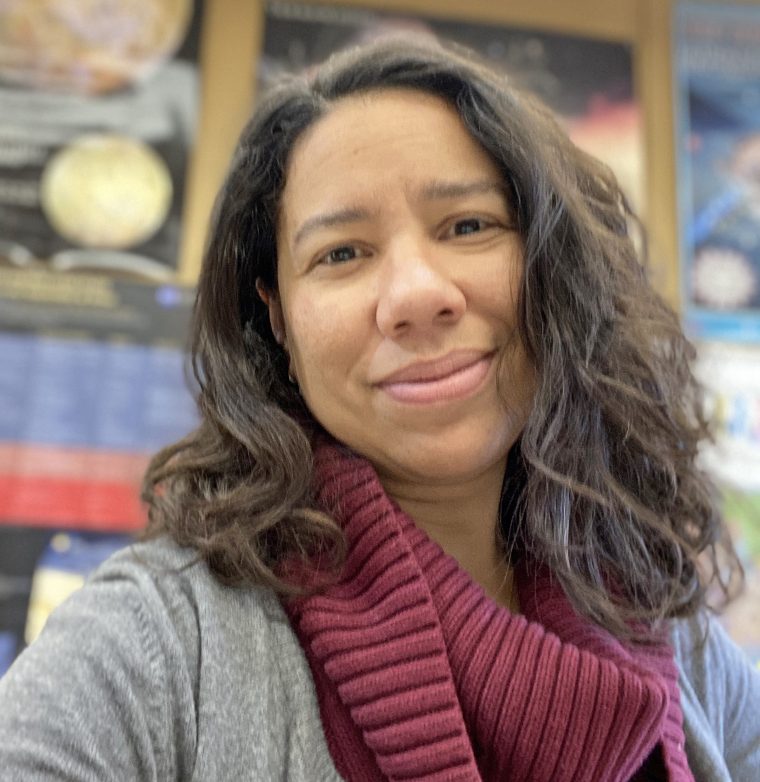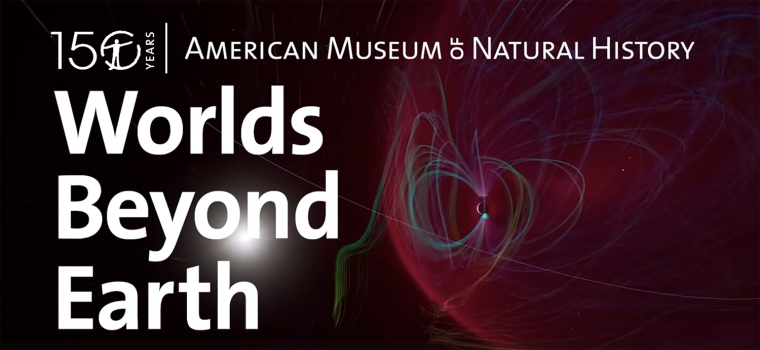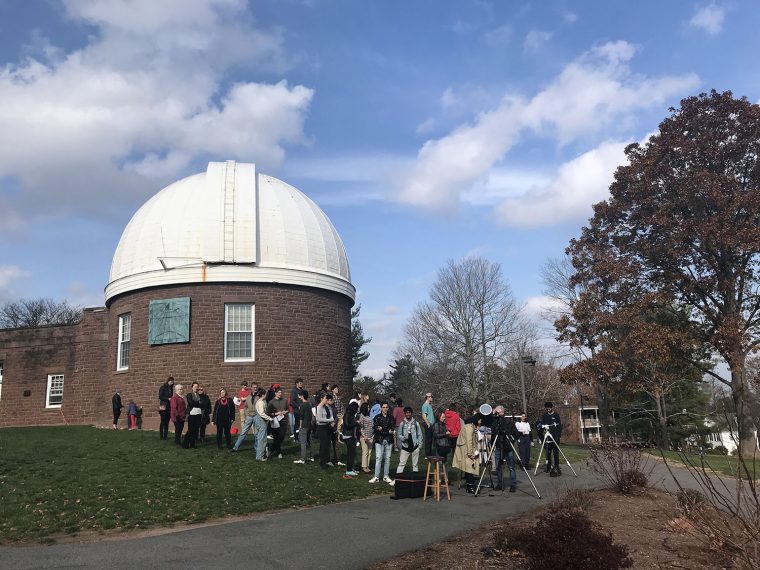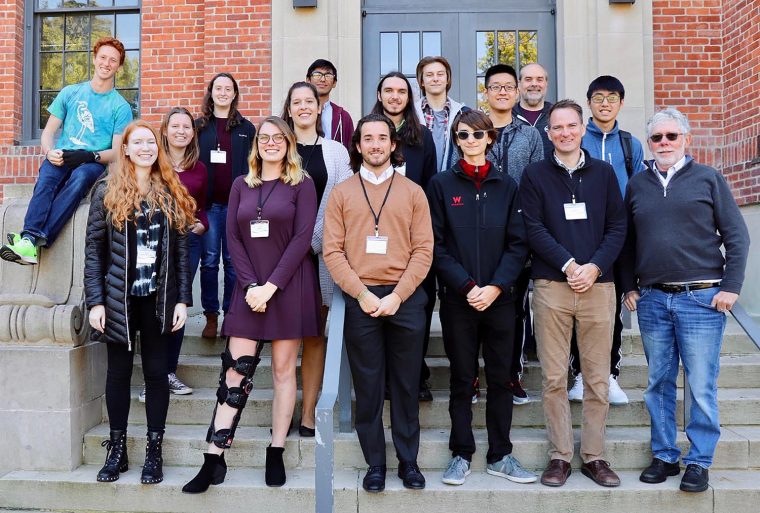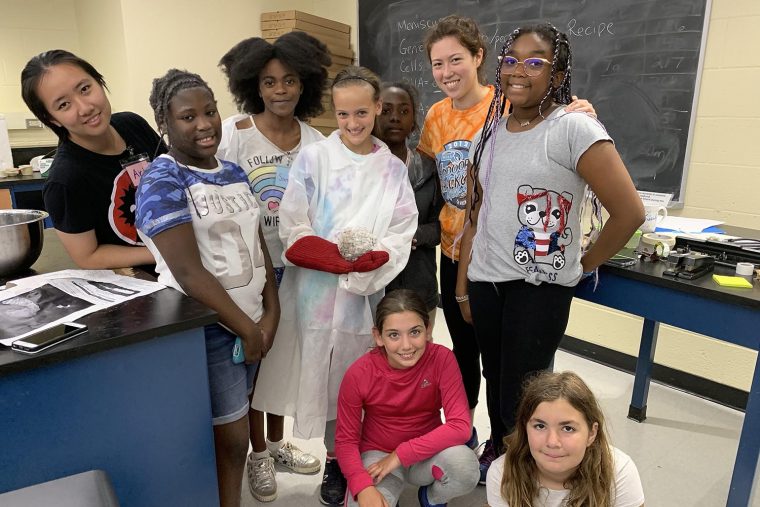Two proposed Venus mission concepts co-developed by planetary geologist Martha Gilmore were selected by NASA’s Discovery Program this week. The selected missions aim to understand how Venus became a scorching planet after it was potentially another habitable world in the solar system with an Earth-like climate. Gilmore, George I. Seney Professor of Geology, professor of earth and environmental sciences, is a co-investigator of both winning concepts. Each project will receive approximately $500 million per mission for development and is expected to launch in the 2028–2030 timeframe. The projects include VERITAS (Venus Emissivity, Radio Science, InSAR, Topography, and Spectroscopy) and DAVINCI+…
Martha Gilmore, George I. Seney Professor of Geology and professor of earth and environmental sciences, is the co-author of seven new papers and articles. These include: “Distinct Mineralogy and Age of Individual Lava Flows in Atla Regio, Venus Derived From Magellan Radar Emissivity,” published in the March 2021 issue of JGR: Planets. Gilmore's former postdoc Jeremy Brossier, Katie Toner '20 and Avi Stein '17 co-authored this paper. “The Venus Life Equation,” published online in the January 2021 issue of Astrobiology. “Variations in the radiophysical properties of tesserae and mountain belts on Venus: Classification and mineralogical trends,” published in the February…
For her exemplary contributions to research in the geological sciences and for being an instrumental mentor to young people of color, Professor Marty Gilmore received the 2020 Randolph W. “Bill” and Cecile T. Bromery Award from the Geological Society of America. Gilmore, George I. Seney Professor of Geology, professor of earth and environmental sciences, and co-coordinator of Wesleyan's Planetary Sciences program, was nominated for the award by Jim Head, the Louis and Elizabeth Scherck Distinguished Professor of Geological Sciences at Brown University. "Few individuals have done more for expanding diversity in the geosciences than Dr. Gilmore," Head said. She "leads…
Martha Gilmore, George I. Seney Professor of Geology and professor of earth and environmental sciences, is prominently featured in a recently released suite of five documentary films about the history, science, exploration, and possible settlement of the planet Venus. In the films, Gilmore, who is co-coordinator of planetary science at Wesleyan, along with other experts in a range of fields, help to illuminate and elucidate the fascinating history and possible future of the second planet from the sun, commonly known as Earth's "sister planet." The suite of films was produced by filmmaker and space exploration advocate Dave Brody P '24.…
If a spacecraft were to quickly travel outside the solar system—potentially en route to a nearby exoplanetary system—it would need to pass through an atmosphere unfamiliar to scientists on Earth. As a recipient of a $415,000 grant from NASA, Seth Redfield, chair and associate professor of astronomy, hopes to learn more about the mysterious makeup of this "outer space." "There are several very early designs for an interstellar probe, but first, we need to understand the properties of the space in between the stars if you are traveling through it, especially at high speed," Redfield said. "Given the vastness of…
Not one, but two spacecraft mission concepts co-developed by Martha Gilmore, George I. Seney Professor of Geology and professor of earth and environmental sciences, received second-round backing from NASA's Discovery Program on Feb. 13. Both concepts—which were awarded $3 million each—would assess whether Venus was ever a habitable planet by examining its landscape, rocks, and atmosphere. NASA's Discovery Program, now in its ninth year, funds investigations to develop concept studies for new missions. Although they’re not official missions yet, the selections focus on compelling targets and science that are not covered by NASA’s active missions or recent selections. Gilmore's projects…
Research conducted by a Wesleyan professor is part of a new space show at the American Museum of Natural History. Martha Gilmore, George I. Seney Professor of Geology and professor of Earth and environmental sciences, worked over the past year developing content for the new Hayden Planetarium Space Show Worlds Beyond Earth. The show opened on Jan. 21 as part of the museum's 150th anniversary celebration. "It’s amazing," Gilmore says. "The images that you see are all realistic. We even contacted some of the engineers for the Magellan spacecraft in order to understand exactly how the spacecraft imaged Venus in…
Martha "Marty" Gilmore, George I. Seney Professor of Geology, professor of earth and environmental sciences, is the author of a research article titled "Present-day volcanism on Venus as evidenced from weathering rates of olivine," published in Science Advances Vol. 6 on Jan. 3, 2020. According to the paper's abstract: At least some of Venus’ lava flows are thought to be <2.5 million years old based on visible to near-infrared (VNIR) emissivity measured by the Venus Express spacecraft. However, the exact ages of these flows are poorly constrained because the rate at which olivine alters at Venus surface conditions, and how that…
For only the seventh time since Wesleyan’s founding, the planet Mercury passed directly in front of the sun, from the perspective of Earth—and Wesleyan served as a gathering place from which to learn about and observe the event. Faculty and students from Wesleyan’s astronomy department, as well as others from the University and the greater Middletown community, gathered outside the Van Vleck Observatory on Nov. 11 to witness the transit through three telescopes. The mild weather and partly cloudy conditions—particularly at the beginning and end of the transit (which lasted from 7:35 a.m. to 1:04 p.m.)—made for good viewings through…
Martha Gilmore, the George I. Seney Professor of Geology, professor of earth and environmental sciences, believes we have a lot to learn from studying Venus—yet the United States has not sent a mission to the Earth-sized planet since the early 1990s. That’s why Gilmore has proposed a major flagship mission concept study to assess whether Venus was ever a habitable planet by looking at its rocks and atmosphere. In October, NASA agreed to fund the planetary mission concept on Venus submitted by Gilmore, a planetary geologist, and colleagues at several other institutions, who come from varied disciplines. Gilmore, who is…
Eight Wesleyan undergraduates presented results of their summer research to the annual Undergraduate Research Symposium sponsored by the Keck Northeast Astronomy Consortium (KNAC) on Oct. 5. This year’s symposium was held at Vassar College and attended by 125 astronomy students and faculty, primarily from the consortium colleges (Bryn Mawr, Colgate, Haverford, Middlebury, Swarthmore, Vassar, Wellesley, Wesleyan, and Williams). Astronomy majors Mason Tea '21 and Rachel Marino '20 and sophomores Alex Henton '22 and Ava Nederlander '22 gave oral presentations of their projects conducted on campus this summer. In addition, astronomy majors Fallon Konow '20, Hunter Vannier '20, Gil Garcia '20,…
(Story by Kerisha Harris) For the sixth year in a row, the weeklong Wesleyan Girls in Science Summer Camp welcomed dozens of middle school-aged girls for a week of learning, exploration, and STEM-centered fun. From Aug. 5-9 inside Exley Science Center, the 32 campers in grades 4-6 spent the week learning about everything from how to extract DNA from a strawberry, to the parts of the brain, and even how to make (but don’t touch) an ice-cold comet. By Friday, the young scientists were excited to share all they had learned with their friends and families, and did so through a poster presentation and…


